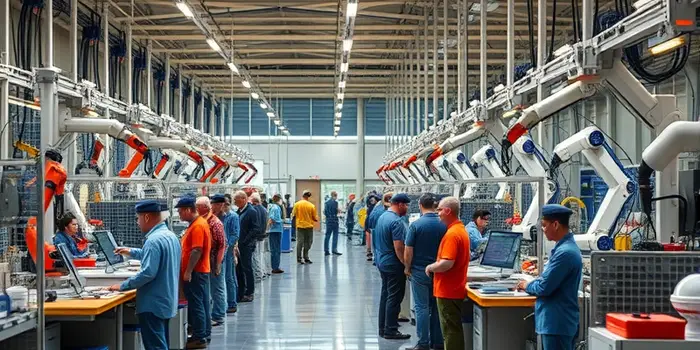
The manufacturing sector, long seen as the backbone of industrial strength, is showing early signs of resurgence. As data reveals, economic conditions, technological advances, and strategic policy measures are converging to ignite a renewed sense of optimism.
Several leading metrics point toward a brewing revival. After years of contraction, new reports suggest the Purchasing Managers Index (PMI) may rebound above the neutral 50 mark in coming months. Analysts at Bank of America predict a rebound in manufacturing could transform the broader market landscape in 2025.
Key signals include:
Labor market tightness in manufacturing, which had peaked through 2021–2023, started to ease in mid-2024. In July, the sector recorded more unemployed workers than job openings for the first time since 2021—an adjustment that may help restore balance to labor costs over the near term.
Additional trends highlight both opportunities and challenges:
Despite the loosening market, long-term forecasts warn that up to 1.9 million positions could go unfilled by 2032 unless workforce development accelerates. Roles requiring digital and soft skills will dominate job creation, placing a premium on training and education.
Digital transformation is no longer confined to large enterprises. Small and medium-sized manufacturers are increasingly deploying AI, automation, and advanced robotics to enhance efficiency. Such investments are unlocking new capabilities:
However, successful technology adoption hinges on workforce readiness. Manufacturers must implement robust training programs to ensure employees can operate and maintain cutting-edge systems—addressing the critical skills gap and integrating new technologies for sustainable competitiveness.
Geopolitical tensions and pandemic-era disruptions have prompted governments to prioritize domestic production. With potential policy shifts on the horizon, including incentives for onshoring, the U.S. and allied nations are reinforcing supply chain resilience.
The semiconductor industry illustrates this trend vividly. Major investments—like an $80 billion commitment to AI-focused data centers—are realigning global capacity and reducing reliance on foreign suppliers. While trade tensions persist, these strategic moves lay the groundwork for a more robust manufacturing ecosystem.
Despite optimistic signals, the sector faces headwinds. Manufacturers must proactively address operational and external risks to cement gains.
Key strategies include:
By embracing leaner processes and diverse talent pipelines, companies can enhance resilience against supply chain shocks and labor shortages alike. Collaboration between industry, government, and educational institutions will be vital for delivering the skilled workforce of tomorrow.
The convergence of favorable economic conditions, technological breakthroughs, and supportive policies sets the stage for a meaningful sector turnaround. Early data suggest that 2025 could mark the beginning of sustained expansion, with benefits cascading across the broader economy.
Leaders in manufacturing must act decisively to capitalize on emerging opportunities. By aligning strategic investments with human capital initiatives, they can drive productivity gains, create high-quality jobs, and reinforce the sector’s role as an engine of growth.
Ultimately, the story of manufacturing’s revival will be one of adaptation, innovation, and collaboration. Stakeholders who embrace change and invest in people stand to shape a future where American manufacturing not only recovers but thrives.
References













